Fujinon XC35mm F2 review: Introduction
When Fujifilm entered the interchangeable lens mirrorless market eight years ago, they did so with the X-Pro1 and three fixed focal length lenses. One of the original lenses for the X-system was the Fujinon XF35mm F1.4 – a prime that with the crop factor applied provides a 52.5mm focal length that’s well suited to low-light, street, portraiture and reportage photography.
With Fujifilm deciding to scrap their plans of making an XF 33mm F1 lens and focus on building a smaller XF 50mm F1 instead, the XF35mm F1.4 remains the fastest prime around this focal length in the X-Series. When it’s compared to newer lenses like the XF35mm F2 R WR, which are weather-sealed and present a more refined feel to their aperture and focus rings, you realise it is starting to show its age a little.
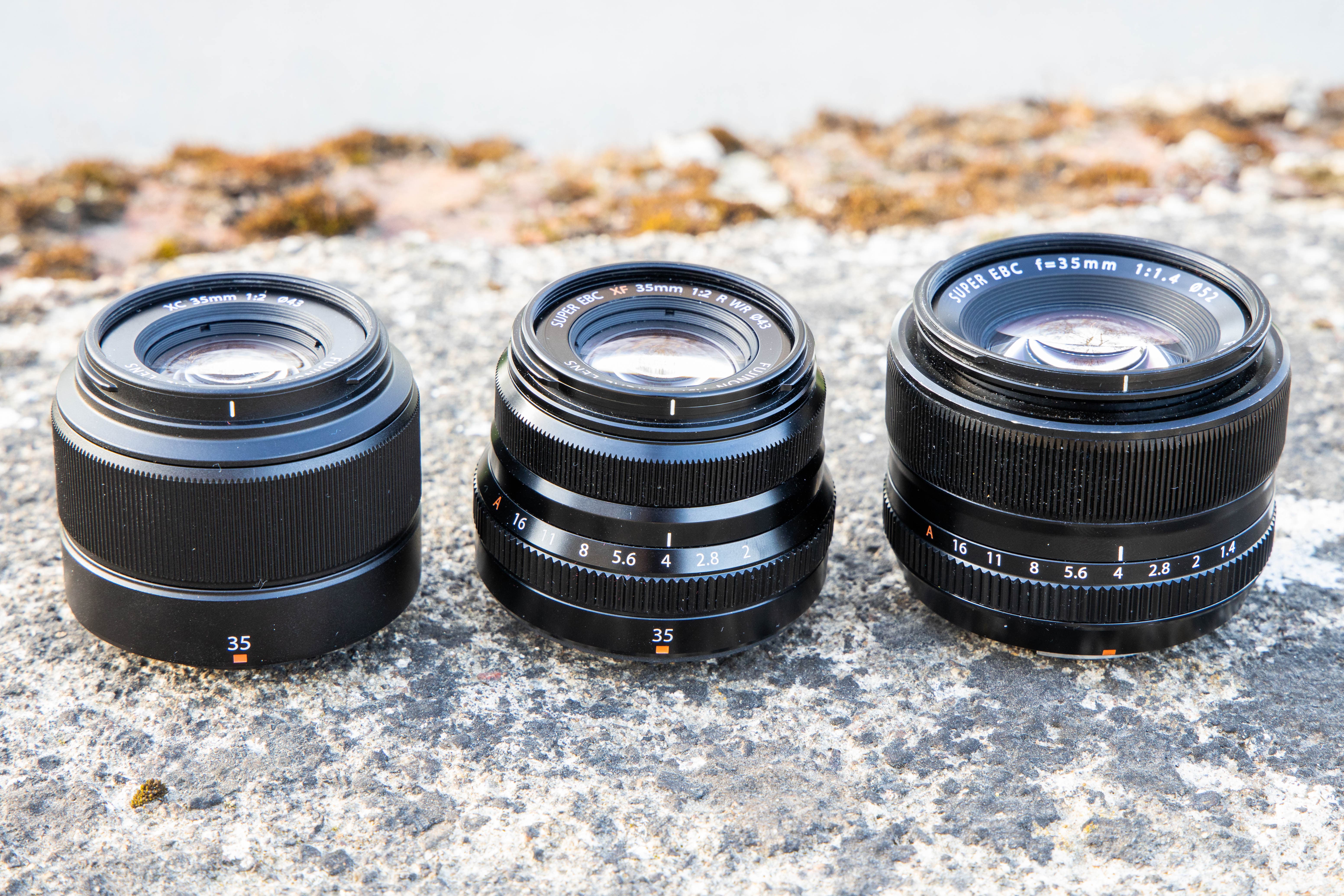
From left to right, the new XC 35mm F2 (£169), the XF 35mm F2 R WR (£335) and the XF 35mm F1.4 R (£499)
The XF35mm F2 R WR has been a hugely important lens for Fujifilm. Being a stop slower than the XF35mm F1.4 R means it doesn’t create quite the same magical blurred backgrounds wide-open, nevertheless it makes up for this by being smaller, lighter and cheaper. It’s a fabulous lens, but £335 is still a lot of money to ask users of Fujifilm’s entry-level and enthusiast models to spend.
Fujifilm has responded to the cry for an even more affordable 35mm lens by making the XC35mm F2. Costing just £169, it becomes the cheapest lens available in the X-series today.
Fujinon XC35mm F2 review: So what’s different?
The XC35mm F2 falls into Fujifilm’s camp of XC lenses. These differ to the company’s premium XF lenses in the way they’re designed to cater for those looking for a cheaper lens that meets strict budget constraints. Although the lens we’re looking at was announced alongside the X-T200, it’ll also be of interest to users of Fujifilm’s other low-cost models, such as the X-A7 and X-T30, not forgetting the many other entry-level and enthusiast models that have been released in the past.

The lens features a 43mm filter thread – the same as the Fujinon XF35mm F2 R WR
The optical construction of nine elements in six groups, with two elements being the aspherical type, is exactly the same as found in the Fujinon XF35mm F2 R WR. With identical optics and the same arrangement of nine diaphragm blades, image quality should be on par with its XF counterpart. To confirm this and identify the various other differences, I requested an XF35mm F2 R WR to be sent out with our review sample of the Fujinon XC35mm F2.
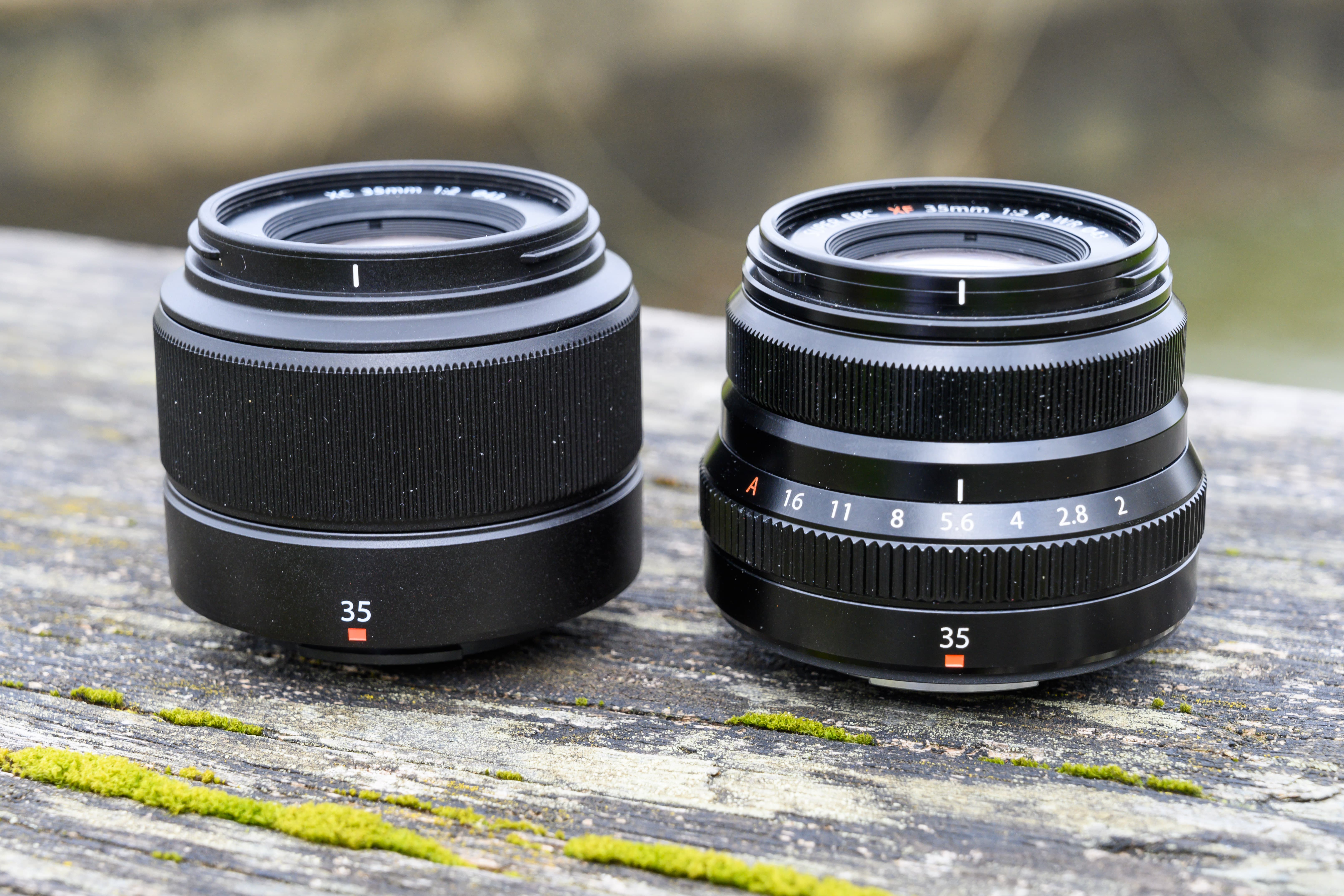
The cheaper Fujinon XC 35mm F2 (£169) pictured on the left and Fujinon XF35mm F2 R WR (£335) to the right
So how exactly has Fujifilm made the lens half the price of the XF version? Unlike the XF35mm F2 R WR, the XC35mm F2 isn’t weather sealed and offers no protection from rain, dust and humid environments that can force us to stow away our kit to prevent it getting damaged.
The design of the barrel and build quality is more basic too. You don’t get a metal lens mount at the rear and the plastic mount is more susceptible to wear and tear. The flip side of this is that the plastic mount, combined with the all-plastic construction of the barrel, contributes to it being 40g lighter than the XF35mm F2 R WR. Although this might not sound like much of a weight saving you can tell the difference when it’s attached to one of Fujifilm’s small and light mirrorless cameras.
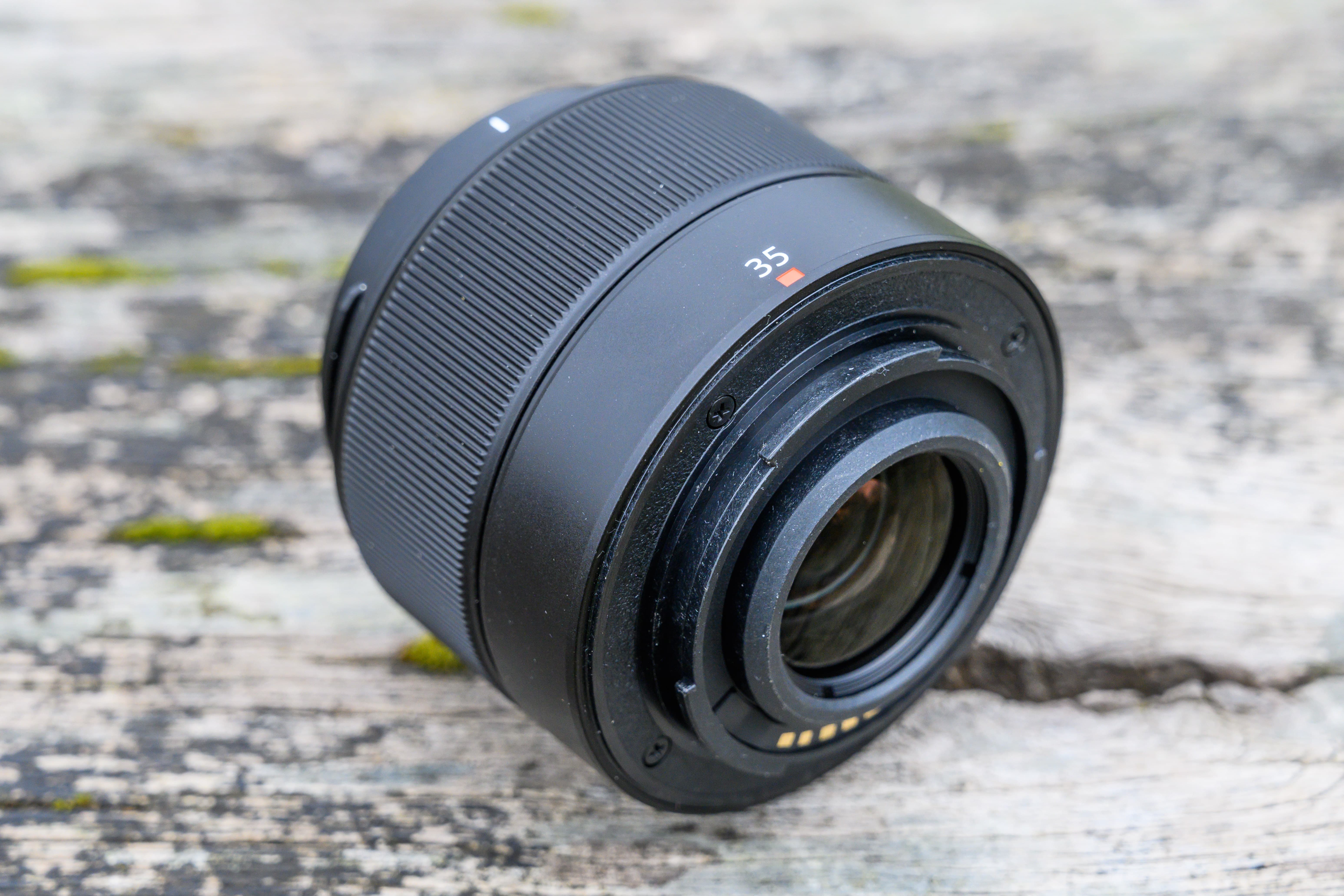
The plastic mount at the rear isn’t as durable as a metal mount. The rear cap that’s supplied with the lens is the basic plastic push-on type
Study the barrel and you’ll notice it also excludes an aperture ring. This forces users to take control of aperture via the camera rather than the lens. The absence of an aperture ring has allowed Fujifilm to make the manual focus ring larger and the diameter of the barrel (58mm) remains consistent to the front the lens whereas the diameter of the barrel gradually steps down on the XF35mm F2 R WR.
As to be expected on a lens of its stature and focal length, optical image stabilisation isn’t featured. A stepping motor is used to drive the focusing elements and the benefit of it being the internal type of focusing system is that the front element doesn’t rotate in use.
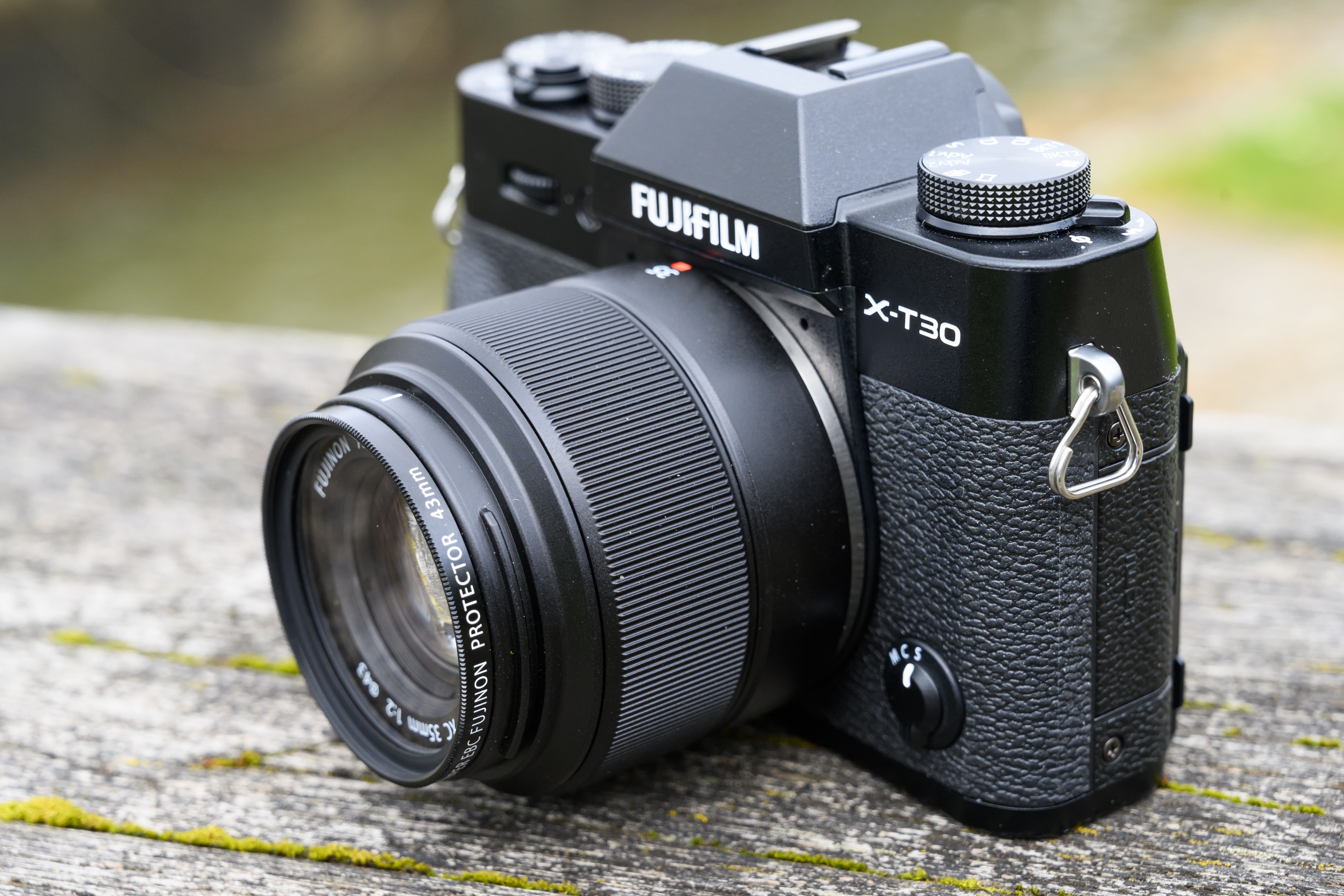
Here we see the lens fitted with a 43mm Super EBC Fujinon protector filter
Elsewhere, the lens has near-focus limit of 35mm and filters and adapters are attached via a small 43mm thread at the front. Front and rear lens caps are supplied, however a plastic lens hood to prevent lens flare isn’t included in the box like it is with the XF35mm F2 R WR. This isn’t a major issue though as third-party metal hoods like JJC’s LH-X35 (£27) are available online and Fujifilm’s LH-XF35-2 metal hood (£50) also fits.
Fujinon XC35mm F2 review: In use
Compared to the XF35mm F1.4 R – a lens that delivers optically stellar images, but is well known for being rather sluggish when it comes to focusing – the XC35mm F2 is evidently faster and quieter in operation.
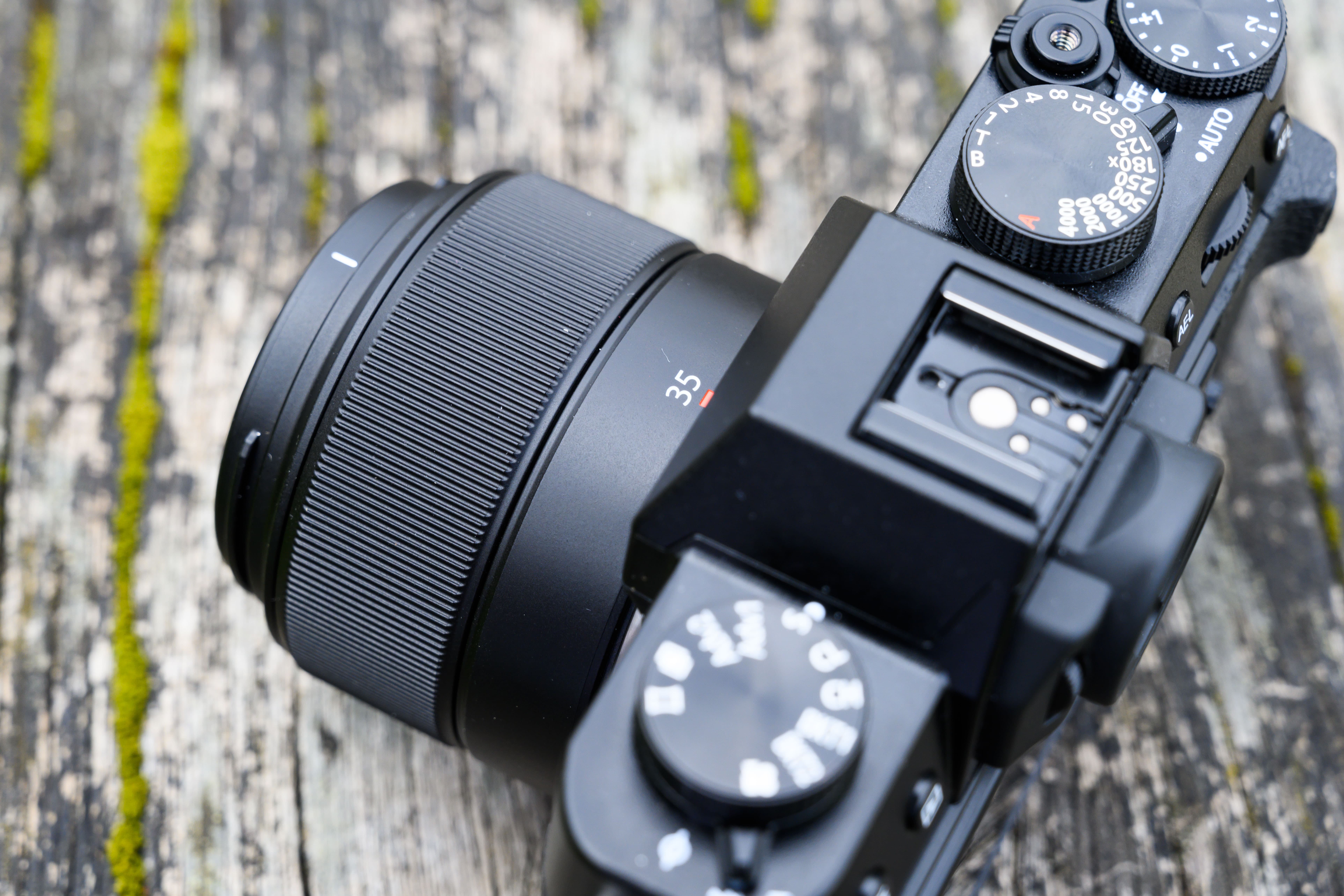
The manual focus ring is finely grooved and rotates smoothly with adequate resistance
Switching back and forth between the XC35mm F2 and XF35mm F2 R WR revealed focus speed is comparable. It latches onto stationary subjects with apparent ease and managed to acquire focus responsively in challenging low-light conditions with no unbearable signs of hunting paired with the Fujifilm X-T30 that we were sent for testing. It was originally hoped we’d be able to test the lens with the Fujifilm X-T200, however this is a camera we’re still awaiting to arrive for review.

The lens isn’t supplied with a lens hood. Here it is pictured with the plastic hood from the XF35mm F2 R WR, which was temporarily attached via the filter thread
Focusing isn’t completely silent and a faint low-frequency whir can be heard when focusing from near to far or vice versa, but this isn’t a major concern, not even for video recording where most ambient sounds will cancel it out.
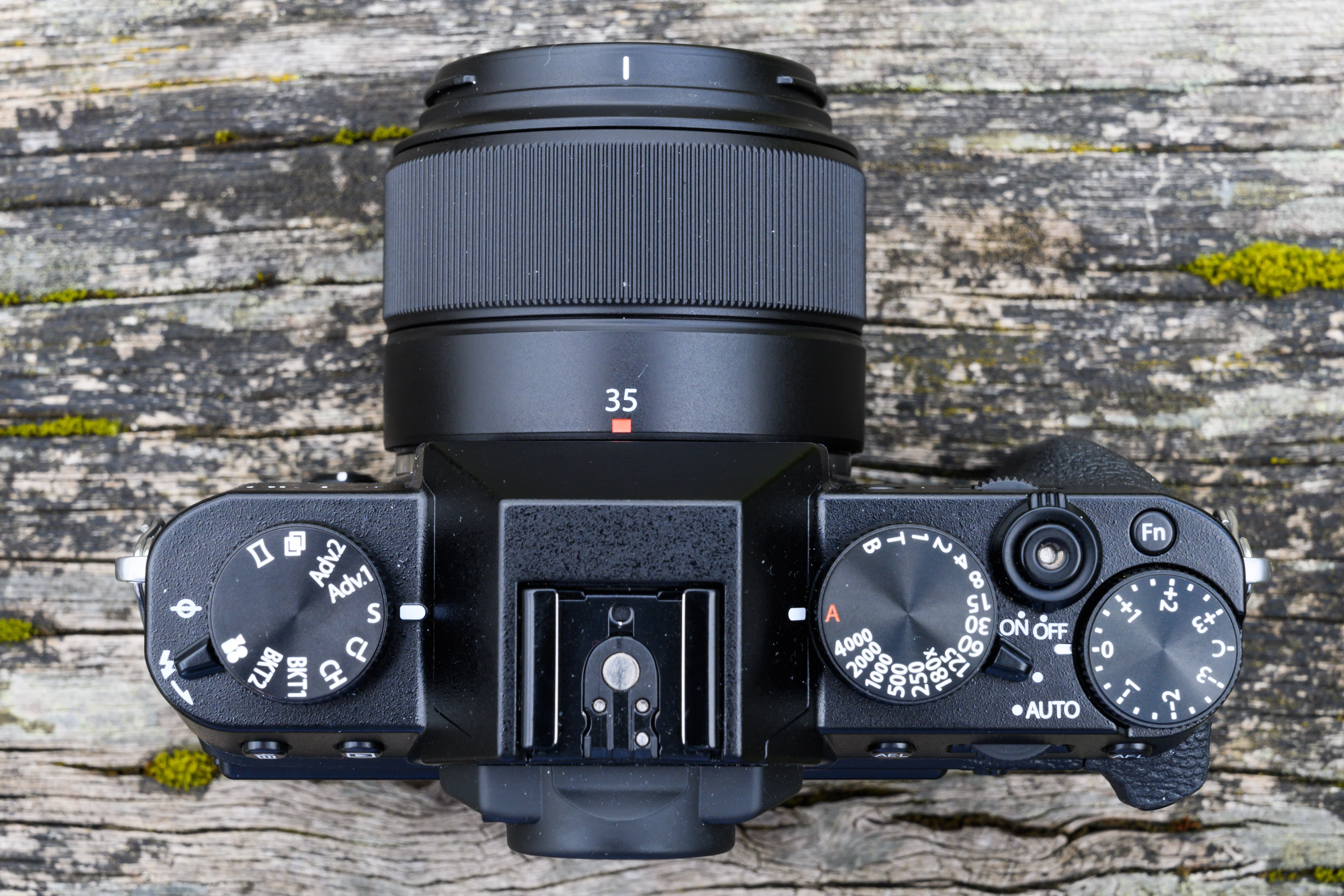
An overhead view of the lens mounted to the Fujifilm X-T30
As a lens to use, it feels right at home on Fujifilm’s smallest mirrorless models. It doesn’t look out of place on the X-T30 either, but if you happen to be coming from XF lenses that feature an aperture ring you should be prepared to take a little time adjusting to changing the aperture via the front dial or rear dial instead of via the lens. The dial you choose to control aperture on the camera is easily setup from the command dial settings in the menu.
Fujinon XC35mm F2 review: Image quality
With the outbreak of coronavirus and strict social distancing measures putting a stop to our usual Applied Imaging tests in the lab, my impression on the lens’ performance was based on real world testing during my daily exercise close to home.

Fujifilm X-T30, Fujinon XC35mm F2, 1/300sec at f/14, ISO 400
Examining images through the aperture range confirmed the XC35mm F2 performs identically to the XF35mm F2 WR. As illustrated by some of the sample images that support this review, central sharpness is excellent when the lens is used wide open. The shallow depth of field created between near and far subjects at f/2 is extremely pleasing on the eye too.

Fujifilm X-T30, Fujinon XC35mm F2, 1/600sec at f/2.8, ISO 200
Central sharpness does improve by stopping the down, with corner sharpness improving around f/4 to f/5.6, which is close to the lens’ sweet spot. It’s only when you start to stop down beyond f/8 to f/11 and f/16 that diffraction gradually starts to have an affect on the level of sharpness.

Fujifilm X-T30, Fujinon XC35mm F2, 1/50sec at f/2, ISO 1250
The beauty of lens-specific metadata being accessed by the raw converter you use is that vignetting and curvilinear distortion correction is automatically taken care of. Shading correction built into the file metadata does an excellent job of correcting vignetting in raw files to the point corners don’t appear any darker than the centre of the frame, even at f/2. It’s a similar story for curvilinear distortion, with horizontal and vertical lines appearing straight just as they should.
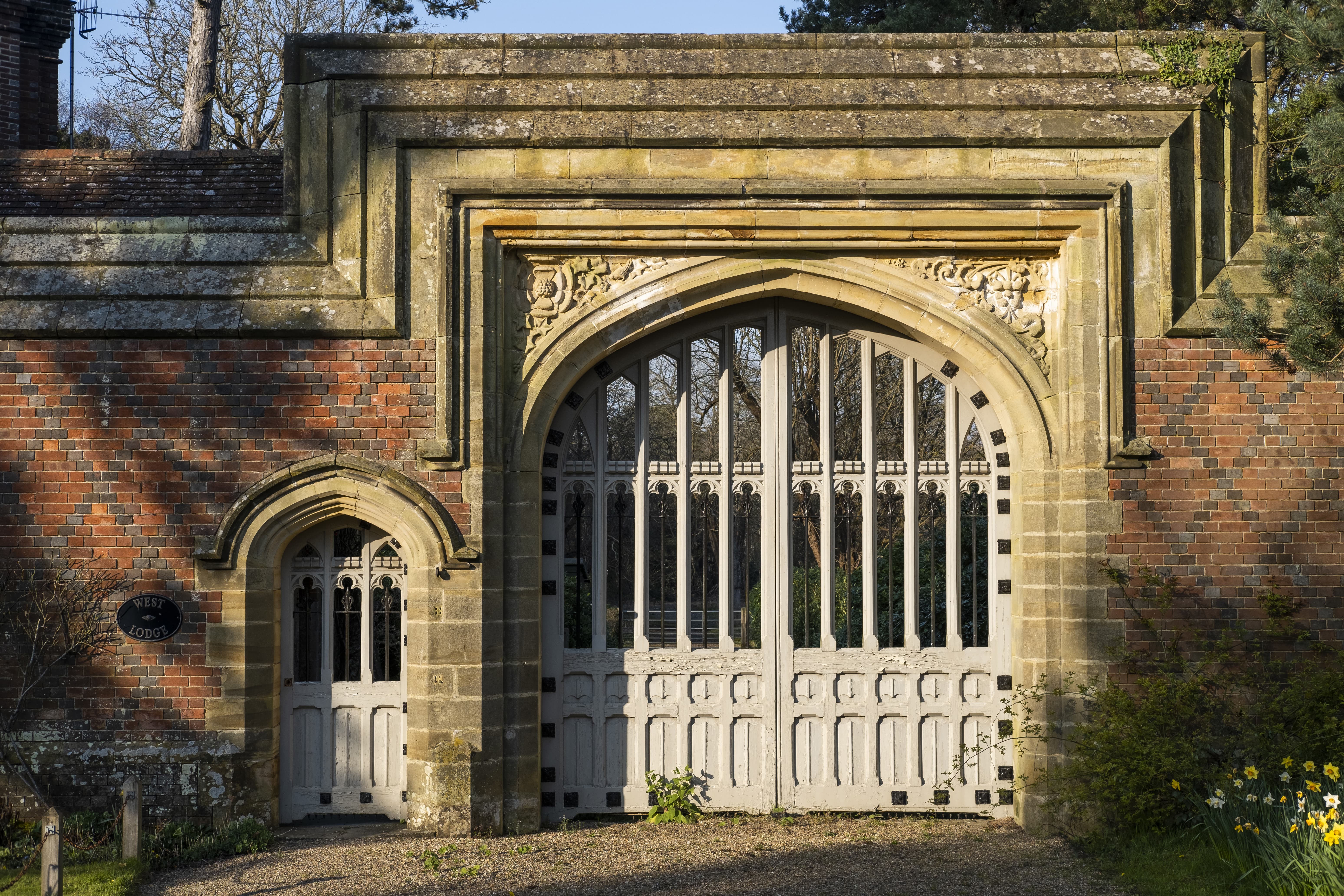
Fujifilm X-T30, Fujinon XC35mm F2, 1/450sec at f/5.6, ISO 200
Harsh backlit scenes did expose some purple and green fringes of colour along high-contrast edges, but overall chromatic aberrations are handled well by the lens. Chromatic aberration is included as part of the built-in lens profile that’s automatically applied to images.
Fujinon XC35mm F2 review: Verdict
With the XC35mm F2, Fujifilm has created a nifty lens that’ll be extremely popular with entry-level and amateur X-series photographers who’d love to own a 50mm equivalent prime for half the price of the XF35mm F2 R WR.
It’s not built to the same robust, weather-sealed standard; it’s rather plasticky and lacks an aperture ring, but it does present advantages of its own in that it’s lightweight and has a good-sized manual focus ring. Most importantly it inherits the same optics from the XF35mm F2 R WR, resulting in images of identical quality and impressive quality at that. For users of entry-level models like the X-A7 and X-T200, it’s a lens that allows images with an attractive shallow depth of field to be captured at low cost.
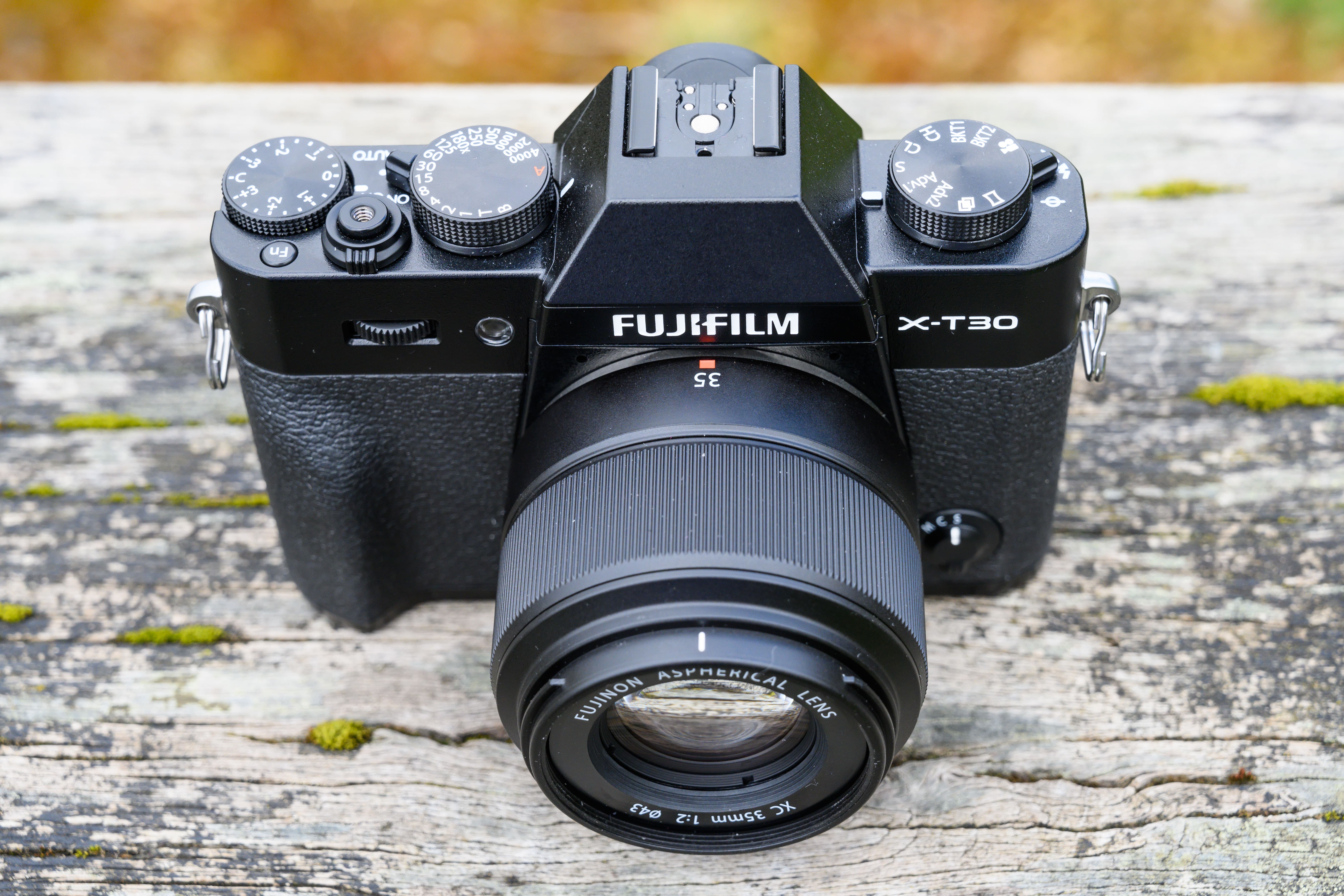
The XC35mm F2 is the first affordable ‘XC’ prime in the X-series. Could there be more to come?
If you consider yourself to be at a more advanced level the saving you can make buying the XC35mm F2 is tempting. That said, if you’d prefer your lens to be better protected from the elements, have a more durable metal mount, offer aperture control and come supplied with a lens hood, the extra you’ll spend on the XF35mm F2 R WR will be worth it.
The other interesting point to take from the arrival of the XC35mm F2 is that it suggests we could see other affordable XC lenses based around the optical design of XF lenses introduced in the future. XC versions of the Fujifilm XF 50mm f2 R WR and XF 23mm f2 R WR might possibly follow in time, which would give X-series users three different tiers of prime lenses to choose from.









